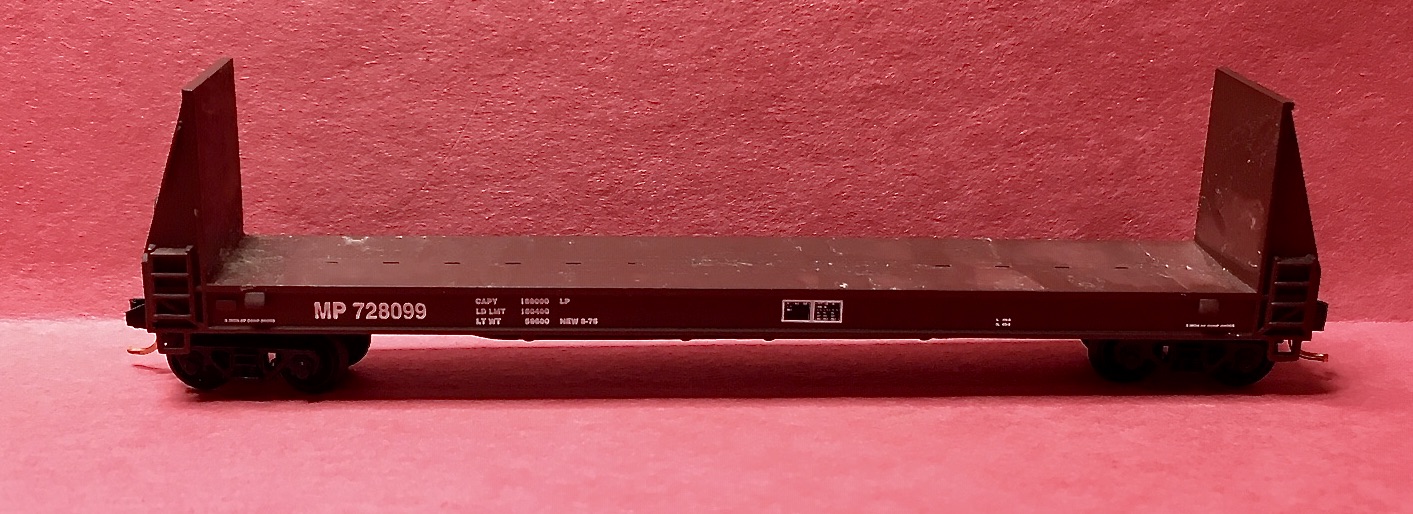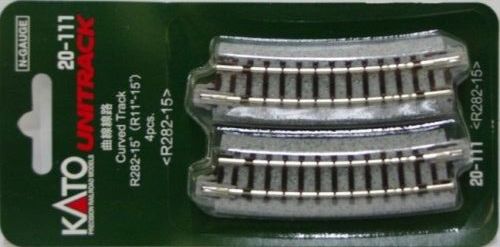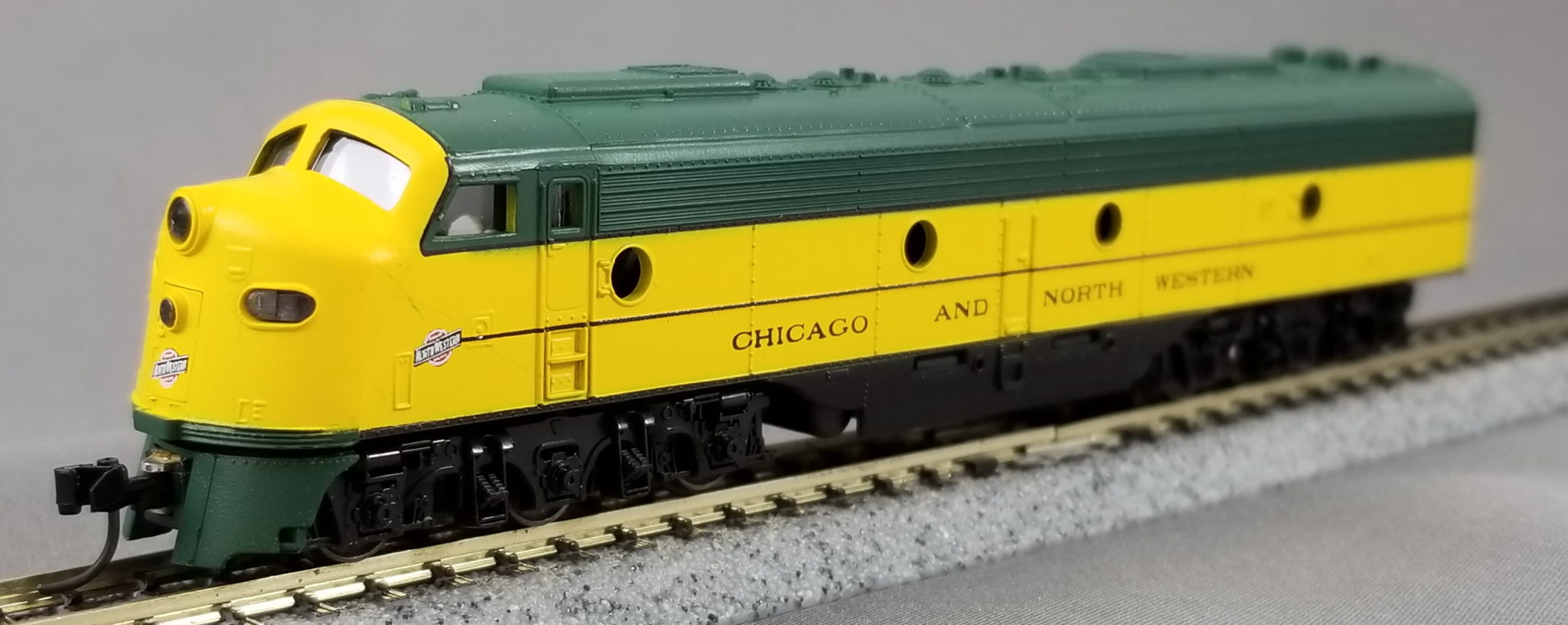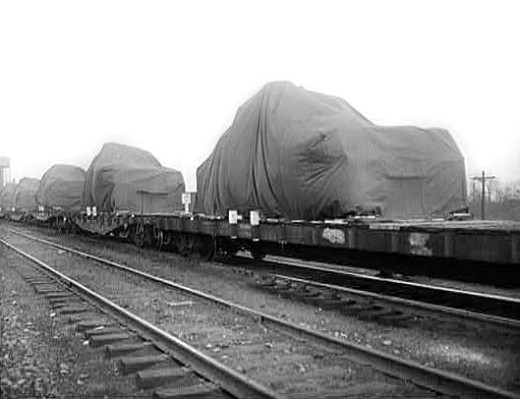Specific Item Information: Generator load made by New Rail Models. Only available as part of 2-Pack NSC 05-Set 4
Model Information: This model is Micro-Trains most popular flatcar. It models a 50 foot prototype. More than 140 different versions have appeared in Micro-Trains regular releases and many more in special runs.
Prototype History: A flatcar (US) (also flat car (US) or flat wagon (UIC)) is a piece of railroad (US) or railway (non-US) rolling stock that consists of an open, flat deck mounted on a pair of trucks (US) or bogies (UK), one at each end containing four or six wheels. Occasionally, flat cars designed to carry extra heavy or extra large loads are mounted on a pair (or rarely, more) of bogeys under each end . The deck of the car can be wood or steel, and the sides of the deck can include pockets for stakes or tie-down points to secure loads. Flatcars designed for carrying machinery have sliding chain assemblies recessed in the deck.
Flatcars are used for loads that are too large or cumbersome to load in enclosed cars such as boxcars. They are also often used to transport intermodal containers (shipping containers) or trailers as part of intermodal freight transport shipping.
From Wikipedia
Flatcars are used for loads that are too large or cumbersome to load in enclosed cars such as boxcars. They are also often used to transport intermodal containers (shipping containers) or trailers as part of intermodal freight transport shipping.
From Wikipedia
Road Name History: 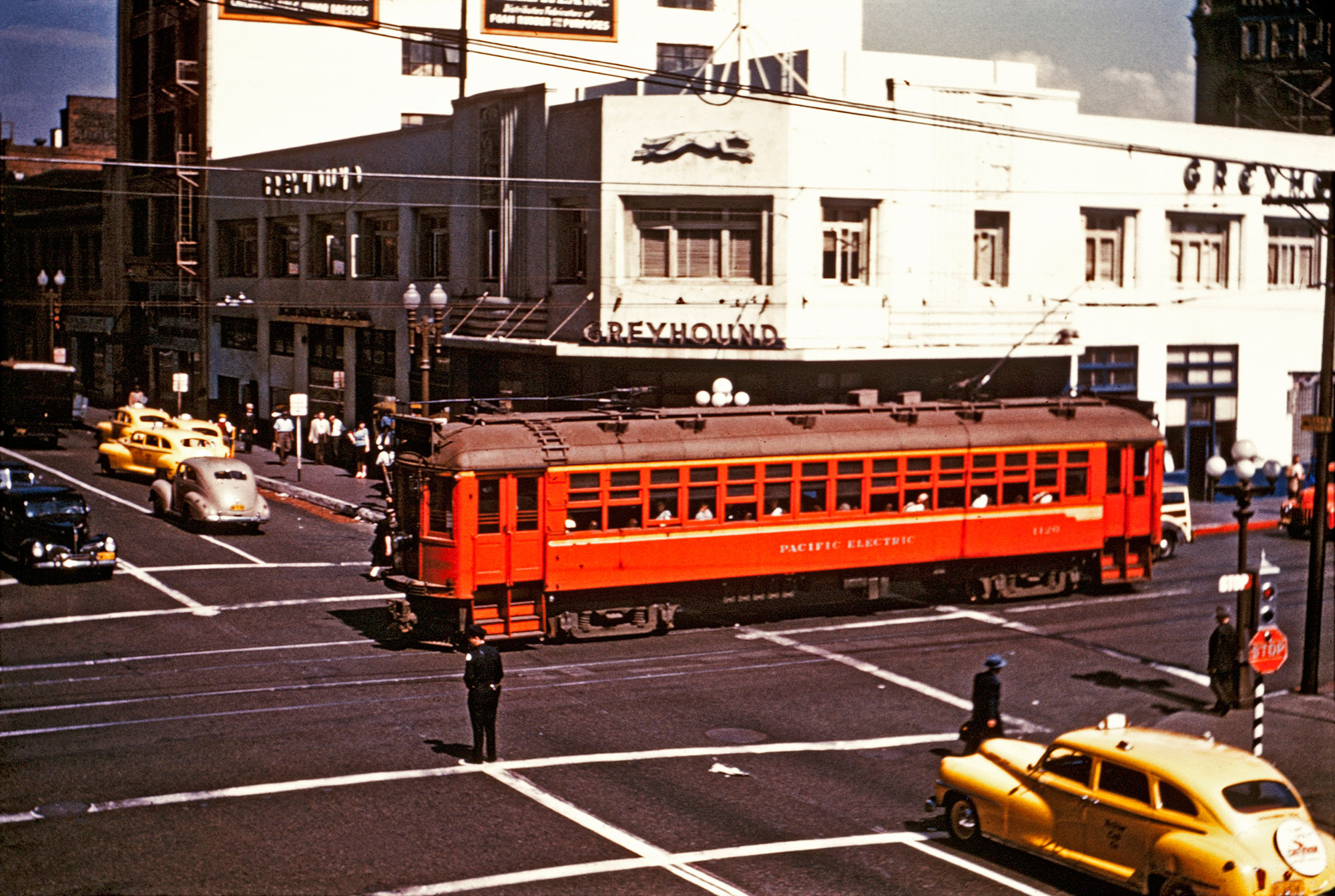 The PE was established in 1901 and built an electric interurban line between Los Angeles and Long Beach, California. With this first line completed in 1902, the PE began building outward in every direction. This caught the attention of Southern Pacific who at first attempted to obstruct the PE’s expansion and then bought a 45% stake in the company. Henry Huntington, PE’s founder, then established a new company, the Los Angeles Inter-Urban Railway and resumed his expansion under that flag – outside of the influence of the SP. By 1908, LAI-U had grown larger than PE but Huntington had come to a truce with Southern Pacific. He leased the LAI-U to Pacific Electric and over the next few years sold control of his various traction lines in the state to SP. In 1911, the PE, LAI-U, Los Angeles Pacific and a handful of smaller lines were combined into a greater Pacific Electric.
The PE was established in 1901 and built an electric interurban line between Los Angeles and Long Beach, California. With this first line completed in 1902, the PE began building outward in every direction. This caught the attention of Southern Pacific who at first attempted to obstruct the PE’s expansion and then bought a 45% stake in the company. Henry Huntington, PE’s founder, then established a new company, the Los Angeles Inter-Urban Railway and resumed his expansion under that flag – outside of the influence of the SP. By 1908, LAI-U had grown larger than PE but Huntington had come to a truce with Southern Pacific. He leased the LAI-U to Pacific Electric and over the next few years sold control of his various traction lines in the state to SP. In 1911, the PE, LAI-U, Los Angeles Pacific and a handful of smaller lines were combined into a greater Pacific Electric.
The new PE blanketed Southern California from San Fernando and Pasadena to the north, Santa Monica, Redondo Beach, San Pedro, Long Beach, Huntington Beach and Balboa along the coast to as far east as Redlands. With 575 miles of line, they were the largest electric railway in the world at the time of the consolidation.
Near the end of the Second World War, PE rostered 483 electric passenger cars ranging from small street cars to large interurban cars, 41 box motors for package freight, a trio of RPO-Express cars, and for heavy freight service 44 electric freight motors, 19 steam locomotives, and 6 diesels (some of which were equipped with trolley poles to trigger PE’s signal system.)
As the popularity of the automobile increased, PE began abandoning lines. In a few cases, lines that were making money were forced into abandonment to make room for new highways. In 1953, the remaining passenger service was sold to Metropolitan Coach Lines. PE continued on as a freight railroad. The freight operations were gradually dieselized with power leased from SP with the last electric freight motor switching customers along Santa Monica Boulevard in January of 1958. In 1965, Pacific Electric Railway was finally merged into parent Southern Pacific.

The new PE blanketed Southern California from San Fernando and Pasadena to the north, Santa Monica, Redondo Beach, San Pedro, Long Beach, Huntington Beach and Balboa along the coast to as far east as Redlands. With 575 miles of line, they were the largest electric railway in the world at the time of the consolidation.
Near the end of the Second World War, PE rostered 483 electric passenger cars ranging from small street cars to large interurban cars, 41 box motors for package freight, a trio of RPO-Express cars, and for heavy freight service 44 electric freight motors, 19 steam locomotives, and 6 diesels (some of which were equipped with trolley poles to trigger PE’s signal system.)
As the popularity of the automobile increased, PE began abandoning lines. In a few cases, lines that were making money were forced into abandonment to make room for new highways. In 1953, the remaining passenger service was sold to Metropolitan Coach Lines. PE continued on as a freight railroad. The freight operations were gradually dieselized with power leased from SP with the last electric freight motor switching customers along Santa Monica Boulevard in January of 1958. In 1965, Pacific Electric Railway was finally merged into parent Southern Pacific.
Brand/Importer Information: Micro-Trains is the brand name used by both Kadee Quality Products and Micro-Trains Line. For a history of the relationship between the brand and the two companies, please consult our Micro-Trains Collector's Guide.
Manufacturer Information:  Micro-Trains Line split off from Kadee Quality Products in 1990. Kadee Quality Products originally got involved in N-Scale by producing a scaled-down version of their successful HO Magne-Matic knuckle coupler system. This coupler was superior to the ubiquitous 'Rapido' style coupler due to two primary factors: superior realistic appearance and the ability to automatically uncouple when stopped over a magnet embedded in a section of track. The success of these couplers in N-Scale quickly translated to the production of trucks, wheels and in 1972 a release of ready-to-run box cars.
Micro-Trains Line split off from Kadee Quality Products in 1990. Kadee Quality Products originally got involved in N-Scale by producing a scaled-down version of their successful HO Magne-Matic knuckle coupler system. This coupler was superior to the ubiquitous 'Rapido' style coupler due to two primary factors: superior realistic appearance and the ability to automatically uncouple when stopped over a magnet embedded in a section of track. The success of these couplers in N-Scale quickly translated to the production of trucks, wheels and in 1972 a release of ready-to-run box cars.
Micro-Trains Line Co. split off from Kadee in 1990 to form a completely independent company. For this reason, products from this company can appear with labels from both enterprises. Due to the nature of production idiosyncrasies and various random factors, the rolling stock from Micro-Trains can have all sorts of interesting variations in both their packaging as well as the products themselves. When acquiring an MTL product it is very important to understand these important production variations that can greatly enhance (or decrease) the value of your purchase.
Please consult our Micro-Trains Collector's Guide

Micro-Trains Line Co. split off from Kadee in 1990 to form a completely independent company. For this reason, products from this company can appear with labels from both enterprises. Due to the nature of production idiosyncrasies and various random factors, the rolling stock from Micro-Trains can have all sorts of interesting variations in both their packaging as well as the products themselves. When acquiring an MTL product it is very important to understand these important production variations that can greatly enhance (or decrease) the value of your purchase.
Please consult our Micro-Trains Collector's Guide
Item created by: gdm on 2019-08-29 10:20:41. Last edited by CNW400 on 2020-09-28 11:10:58
If you see errors or missing data in this entry, please feel free to log in and edit it. Anyone with a Gmail account can log in instantly.
If you see errors or missing data in this entry, please feel free to log in and edit it. Anyone with a Gmail account can log in instantly.





